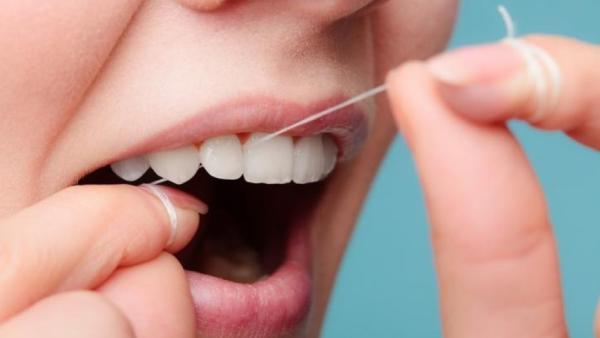Reprinted by permission of McGill University Office for Science and Society.
###
A recently published paper in the Journal of Exposure Science & Environmental Epidemiology managed to create a great deal of public angst about using some types of dental floss. “This is the first study to show that using dental floss containing PFAS is associated with a higher body burden of these toxic chemicals,” opined lead author Katie Boronow of the non-profit Silent Spring Institute in Massachusetts.
“Per and polyfluoroalkyl substances (PFAS)” encompass hundreds of compounds that share the unique property of being resistant both to water and fats leading to their use in food packaging, stain-resistant fabrics, outdoor clothing and non-stick cookware. Some types of dental floss, Oral-B Glide for example, are formulated with polytetrafluoroethylene (Teflon) to facilitate insertion between teeth. In the study in question, the researchers present data showing that people who use this type of dental floss have higher levels of some PFAS in their blood than non-users. That is the finding that caught the media’s attention and ended up sparking consumer anxiety.
While this paper is of some academic interest, the data certainly do not provide any rationale for altering flossing habits. First, the study has nothing to do with determining toxicity. All the researchers did was measure levels of six fluorinated chemicals in the blood of 178 middle-aged women and interview them about exposure to products that in theory may lead to these compounds appearing in the bloodstream. Remember, though, that the presence of a chemical cannot be equated to the presence of toxicity!
True, some polyfluorinated compounds have been linked with health problems based on cell culture, animal and occupational exposure studies, but of course, effects depend on the dose. There is no mention in the Silent Spring study of any connection between the amounts of PFAS found and potential toxic effects. Furthermore, while somewhat higher levels are found in “Glide” flossers, there is no way to know that the compounds came from the floss rather than from some other type of exposure. Indeed, their origin from floss is questionable, since according to the manufacturer, PFAS are not detected in the floss itself.
There are other issues. Science revolves around numbers, but in this study, quantization is very weak. Whether it was about their use of non-stick frypans, dental floss or consuming food from cardboard containers, subjects were asked if they engaged in the activity “ever” or “never.” We don’t know if the subjects used floss once a week or every day. Then there is the problem that the range of the levels of PFAS detected in the blood is very wide. While on average flossers did have higher levels, some had significantly lower levels than non-flossers, in the case of some compounds, by as much as 17%. Even with subjects who said they frequently ate from fast-food cardboard containers there was a large range, some actually having lower levels of PFAS than people who claimed to rarely consume such foods. In any case, I would have greater concern about the contents of the container than about chemicals leaching out from the grease-proof coating.
Bottom line? This study says nothing about any effect of the detected chemicals may have on health. Furthermore, quantization of exposure is shaky, determining where the compounds originated is weak, and the range of data is too wide to allow for significant conclusions.
As far as flossing goes, the evidence is clear that it improves dental health so I’ll keep flossing without worrying about the type of floss I use.
The original McGill University OSS post can be found here.




